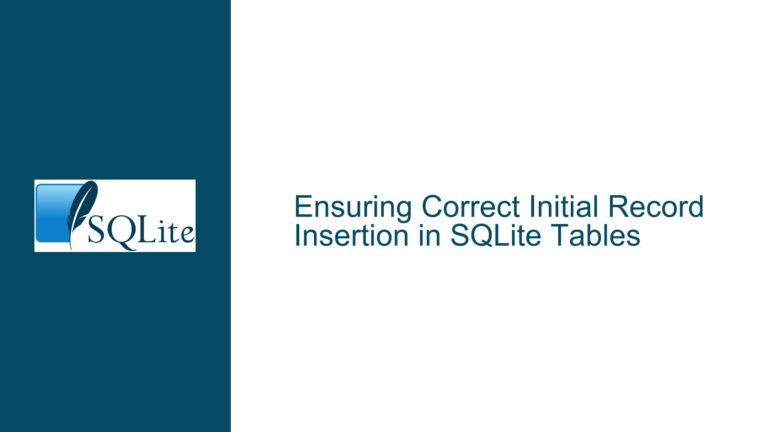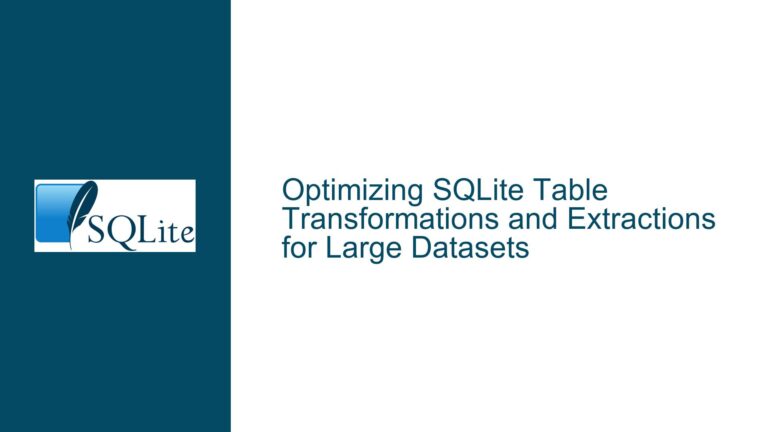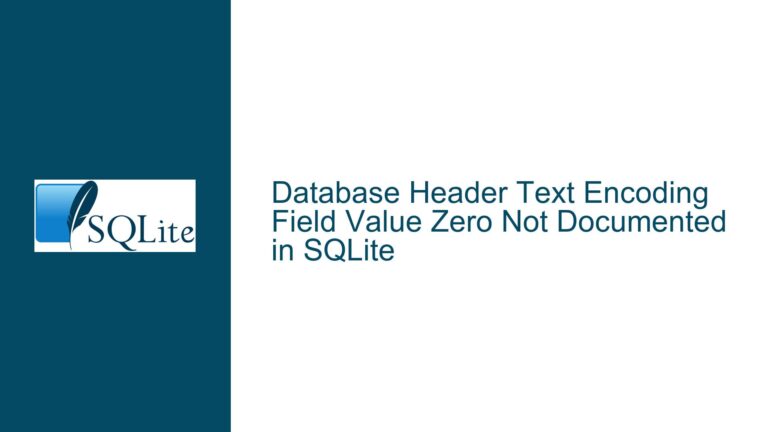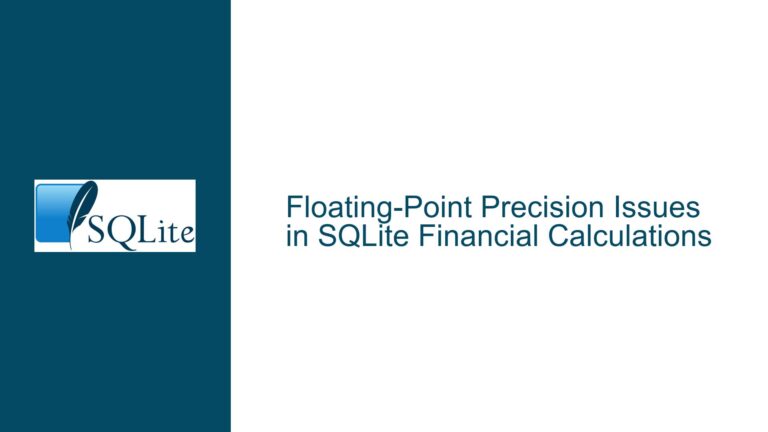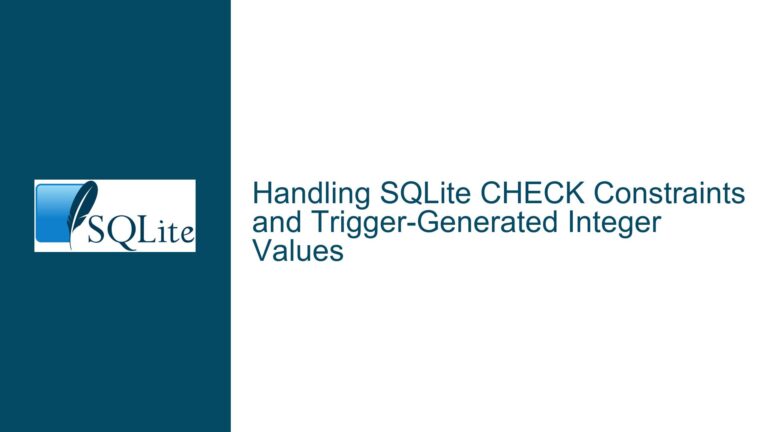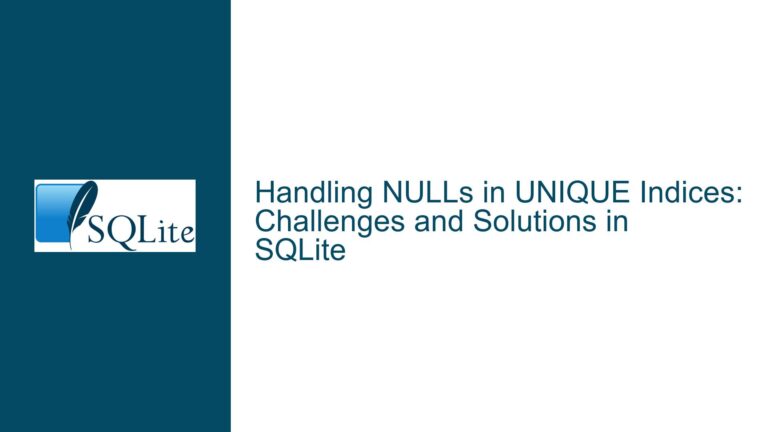SQLite Atomicity and Torn Writes in Power Failure Scenarios
SQLite Atomicity and the Risk of Torn Writes During Power Failures
SQLite is renowned for its atomic transaction capabilities, ensuring that database operations either complete fully or not at all, even in the face of unexpected interruptions such as power failures. However, the atomicity of SQLite transactions can be compromised under specific conditions, particularly when dealing with the physical limitations of storage devices and file systems. One such condition is the occurrence of "torn writes," where a partial write operation leaves the database or journal file in an inconsistent state. This issue is particularly relevant when considering the behavior of storage devices at the sector level and how SQLite interacts with these devices during write operations.
At the heart of this issue is the way SQLite handles journaling and write-ahead logging (WAL) to ensure data integrity. When a transaction is committed, SQLite writes changes to a journal file before applying them to the main database file. This process is designed to allow recovery in the event of a crash or power failure. However, if a power failure occurs during the write operation to the journal file, there is a risk that only part of the data will be written, leading to a torn write. This can result in an inconsistent state where the journal file contains incomplete or corrupted information, making it impossible to recover the transaction properly.
The concern raised in the discussion revolves around the scenario where a power failure interrupts the writing of a 4-byte page count value in the journal file header. If the power failure occurs after only the first 2 bytes are written, the journal file would contain an incomplete page count, leading to potential data corruption during recovery. This scenario highlights the importance of understanding how SQLite interacts with the underlying storage system and the measures it takes to mitigate the risk of torn writes.
Interrupted Write Operations and Storage Device Behavior
To fully grasp the implications of torn writes in SQLite, it is essential to understand the behavior of storage devices during write operations. Modern storage devices, whether they are SSDs, HDDs, or other forms of non-volatile memory, operate at the block or sector level. This means that writes are typically performed in units of a fixed size, known as a block or sector, rather than at the byte level. For example, a typical sector size is 512 bytes or 4KB. When a write operation is initiated, the storage device writes the entire block or sector in a single operation, ensuring that the data is either fully written or not written at all.
However, the reality is more nuanced. While storage devices are designed to handle writes at the block level, there are scenarios where a partial write can occur. This is particularly true in the case of power failures, where the storage device may not have enough time to complete the write operation before losing power. In such cases, the storage device may write only part of the block or sector, leading to a torn write. This can result in data corruption, as the incomplete write may leave the file in an inconsistent state.
SQLite addresses this issue by implementing several safeguards. One of the key mechanisms is the use of checksums and error detection codes (EDCs) to detect and correct torn writes. When SQLite writes data to the journal file or the main database file, it includes a checksum or EDC with each block or sector. If a torn write occurs, the checksum or EDC will not match the data, allowing SQLite to detect the corruption and take corrective action. Additionally, SQLite uses a technique known as "atomic sector writes" to ensure that critical data, such as the journal file header, is written in a way that minimizes the risk of torn writes.
Despite these safeguards, the risk of torn writes cannot be entirely eliminated, especially in environments where power failures are common. This is why SQLite also provides options for configuring the journaling mode and enabling features such as write-ahead logging (WAL) to further enhance data integrity. By understanding the behavior of storage devices and the measures SQLite takes to mitigate the risk of torn writes, developers can make informed decisions about how to configure and use SQLite in their applications.
Mitigating Torn Writes with PRAGMA journal_mode and WAL
To address the risk of torn writes and ensure data integrity in SQLite, developers can leverage several configuration options and best practices. One of the most effective ways to mitigate the risk of torn writes is to use the PRAGMA journal_mode command to configure the journaling mode of the database. SQLite supports several journaling modes, including DELETE, TRUNCATE, PERSIST, MEMORY, and WAL. Each of these modes has different characteristics and trade-offs, but the WAL mode is particularly well-suited for environments where power failures are a concern.
In WAL mode, SQLite uses a write-ahead log to record changes to the database, rather than writing directly to the main database file. This allows SQLite to defer writes to the main database file until a later time, reducing the risk of torn writes during a power failure. Additionally, WAL mode provides better concurrency and performance compared to traditional journaling modes, making it an attractive option for many applications.
Another important consideration is the use of the PRAGMA synchronous command to control how SQLite handles write operations. By default, SQLite uses the FULL synchronous mode, which ensures that all writes are flushed to the storage device before the transaction is considered complete. This provides the highest level of data integrity but can also result in slower performance. In environments where performance is a priority, developers may choose to use the NORMAL or OFF synchronous modes, but these modes increase the risk of data corruption in the event of a power failure.
In addition to configuring the journaling mode and synchronous settings, developers should also consider implementing a robust backup strategy to protect against data loss. SQLite provides several tools for creating and managing database backups, including the .backup command and the sqlite3_backup API. By regularly backing up the database, developers can minimize the impact of data corruption and ensure that they can recover from a power failure or other unexpected event.
Finally, it is important to test the database under realistic conditions to identify and address any potential issues. This includes simulating power failures and other adverse conditions to ensure that the database can recover gracefully and maintain data integrity. By following these best practices and leveraging the features provided by SQLite, developers can minimize the risk of torn writes and ensure that their applications are resilient to power failures and other unexpected events.
Conclusion
The risk of torn writes in SQLite is a complex issue that requires a deep understanding of both the database engine and the underlying storage system. By understanding the behavior of storage devices during write operations and the measures SQLite takes to mitigate the risk of torn writes, developers can make informed decisions about how to configure and use SQLite in their applications. By leveraging features such as WAL mode, PRAGMA synchronous, and robust backup strategies, developers can ensure that their databases are resilient to power failures and other unexpected events, providing a high level of data integrity and reliability.

